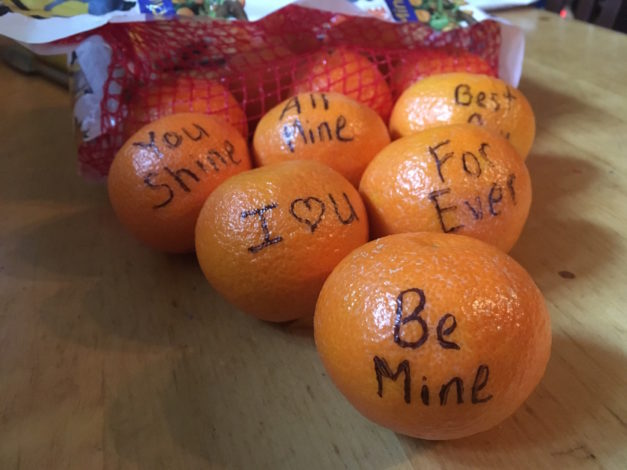
In this day and age of over-processed everything, I struggle to find Valentine options that don't create sugar-rushed kids, trash or junk toys that just get thrown away. So I went in search of Valentine's Day craft ideas for some hiking-inspired options and found a
creative idea from Wilder Child that is great if your child collects treasures from your backyard - of if you have feathers, rocks, nuts or shells around your home.
I took it a step further and wanted Valentines we could take hiking but that you wouldn't have to carry out (except the peels). I found a great pen that writes on pears and bananas. However, if you write on a pear, you have to make sure your markers are safe to ingest or buy edible ink markers. I'm not about tracking down a whole set of markers that I'll use once. I have tiny living goals and am training my brain to purchase strategically for that goal. One-use items don't usually count, which means I'm sticking to fruit with peels. Bananas are great but tend to get extra smooshed in our hiking packs ... so oranges it was!
How to Make Cutie Valentine's Day "Cards"
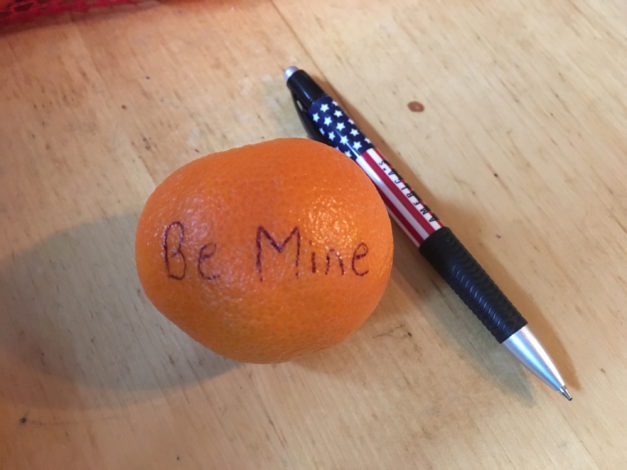
I first tried using a pen, but I didn't like the skinny lines, so I adjusted. With my sharpie all set, I went to work.
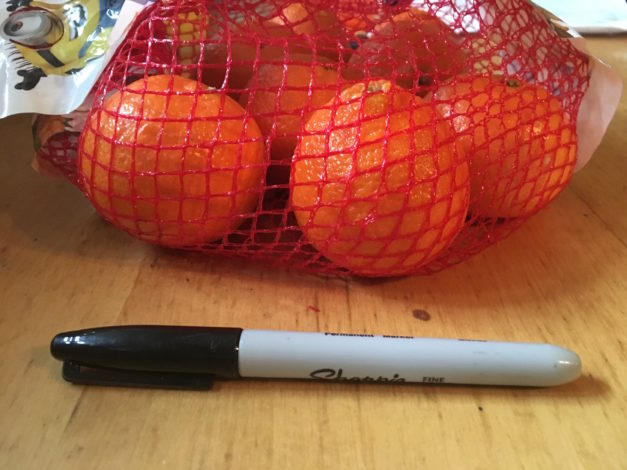
I looked up conversation hearts to pull a few sayings and got to writing.
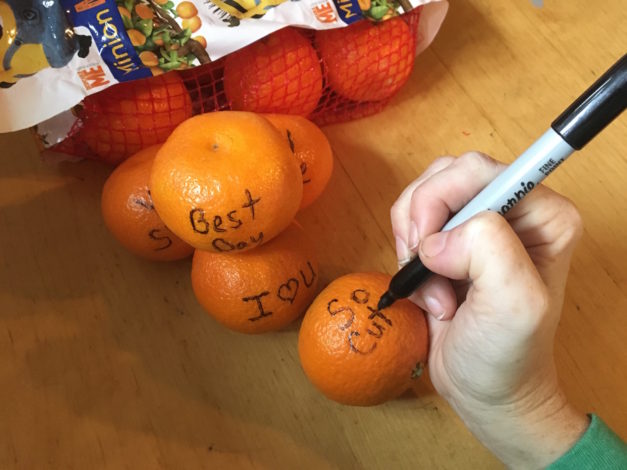
Until I had a bag full of Valentine Wishes to hand out.
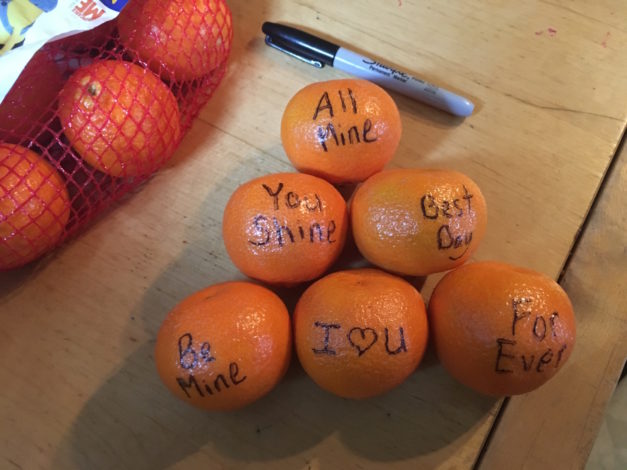
If you're more artistically inclined than I am, you could even use colors and add hearts and emoji faces to your collection of oranges. I did the whole bag in about 10 minutes. Success? I'd say so. Now we're ready to head out on a Valentine's Day hiking adventure with a special surprise treat to share.
Happy hiking and Happy Valentine's Day!
Read More:
What are you planning for Valentine's Day? Let us know in the comments below. We love hearing from you.
 In this day and age of over-processed everything, I struggle to find Valentine options that don't create sugar-rushed kids, trash or junk toys that just get thrown away. So I went in search of Valentine's Day craft ideas for some hiking-inspired options and found a creative idea from Wilder Child that is great if your child collects treasures from your backyard - of if you have feathers, rocks, nuts or shells around your home.
I took it a step further and wanted Valentines we could take hiking but that you wouldn't have to carry out (except the peels). I found a great pen that writes on pears and bananas. However, if you write on a pear, you have to make sure your markers are safe to ingest or buy edible ink markers. I'm not about tracking down a whole set of markers that I'll use once. I have tiny living goals and am training my brain to purchase strategically for that goal. One-use items don't usually count, which means I'm sticking to fruit with peels. Bananas are great but tend to get extra smooshed in our hiking packs ... so oranges it was!
In this day and age of over-processed everything, I struggle to find Valentine options that don't create sugar-rushed kids, trash or junk toys that just get thrown away. So I went in search of Valentine's Day craft ideas for some hiking-inspired options and found a creative idea from Wilder Child that is great if your child collects treasures from your backyard - of if you have feathers, rocks, nuts or shells around your home.
I took it a step further and wanted Valentines we could take hiking but that you wouldn't have to carry out (except the peels). I found a great pen that writes on pears and bananas. However, if you write on a pear, you have to make sure your markers are safe to ingest or buy edible ink markers. I'm not about tracking down a whole set of markers that I'll use once. I have tiny living goals and am training my brain to purchase strategically for that goal. One-use items don't usually count, which means I'm sticking to fruit with peels. Bananas are great but tend to get extra smooshed in our hiking packs ... so oranges it was!
 I first tried using a pen, but I didn't like the skinny lines, so I adjusted. With my sharpie all set, I went to work.
I first tried using a pen, but I didn't like the skinny lines, so I adjusted. With my sharpie all set, I went to work.
 I looked up conversation hearts to pull a few sayings and got to writing.
I looked up conversation hearts to pull a few sayings and got to writing.
 Until I had a bag full of Valentine Wishes to hand out.
Until I had a bag full of Valentine Wishes to hand out.
 If you're more artistically inclined than I am, you could even use colors and add hearts and emoji faces to your collection of oranges. I did the whole bag in about 10 minutes. Success? I'd say so. Now we're ready to head out on a Valentine's Day hiking adventure with a special surprise treat to share.
Happy hiking and Happy Valentine's Day!
If you're more artistically inclined than I am, you could even use colors and add hearts and emoji faces to your collection of oranges. I did the whole bag in about 10 minutes. Success? I'd say so. Now we're ready to head out on a Valentine's Day hiking adventure with a special surprise treat to share.
Happy hiking and Happy Valentine's Day!




Comments